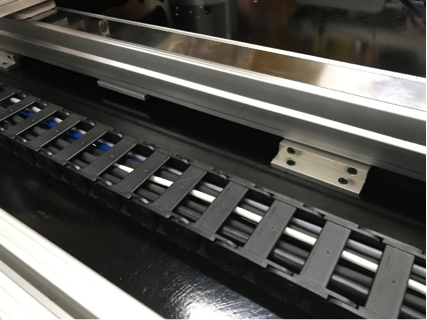Increasing productivity and decreasing downtime of your facility’s automated test equipment is every manufacturer’s dream. But, for new automated test equipment, planning to decrease downtime should start long before your automated test equipment is ever on the factory floor. In fact, it should even start well before the first component is ever assembled.
 These 11 tips highlight methods for designing, developing, and maintaining automated test equipment that has less downtime and more productivity.
These 11 tips highlight methods for designing, developing, and maintaining automated test equipment that has less downtime and more productivity.
- Perform an extensive design analysis— By investing in software and robotic simulation or mechanical finite element analysis (FEA) tools, you can increase the quality and reliability of your automated test equipment by subjecting your initial designs and machine upgrades to real-world conditions in a simulation environment.
- Select the proper components for the job—Consider a variety of physical properties for each component going into the system, including strength and wear resistance, weight, price and source, and corrosion resistance, conductivity, and magnetism.
- Avoid custom components and work with reputable suppliers—It’s typically more cost effective to use a commercial off-the-shelf solution versus a custom component.
- Start with a solid foundation—Using welded steel over aluminum extrusion allows for a solid foundation, which creates a stable machine, increasing accuracy and repeatability.
- Assemble your automated test equipment using dowel pins— Steel dowel pins and their corresponding holes are designed to fit tightly together, unlike bolts or screws that may allow significant variations that can lead to misalignment.
- Cable management should not be an afterthought—For better efficiency, design cables into the automated test equipment, don’t make them an afterthought.
 An example of automated test equipment that has properly planned cable management.
An example of automated test equipment that has properly planned cable management. - Develop control safeguards—Include preventative controls that make the software intelligent enough to thwart misuse that could potentially damage the machine.
- Design for serviceability and flexible changeover—It’s no secret that most parts used in automated test equipment will wear over time and need to be repaired or replaced, so it’s best to plan for this from the beginning by building a machine that is easy to service and offers flexible changeover.
- Utilize intelligent fault handling and messaging—Investing the time upfront to incorporate diagnostic features that allow the system to easily give a clear indication of problem areas as they arise will help decrease diagnostic time and ultimately decrease downtime.
- Incorporate remote support— When software issues arise or upgrades are necessary, troubleshooting and upgrading can often be performed remotely by a third party such as the machine builder.
- Don’t just train operators to operate the automated test equipment— Beyond training operators to perform the tasks required to operate the automated test equipment, it’s best to train operators to maintain machines as well.
When unplanned downtime occurs for your automated test equipment, employees and machines are sitting idle and products are not being made. While downtime costs vary widely across industries, they can be significant. Thus, your initial investment to plan for methods to minimize downtime can payoff extremely quick.
Learn more about these 11 methods for reducing downtime and increasing productivity for your automated test equipment by downloading the full white paper.

 An example of automated test equipment that has properly planned cable management.
An example of automated test equipment that has properly planned cable management.


 PrimeTest Automation will consistently provide products and services utilizing the latest technologies that meet or exceed the requirements and expectations of our customers. We will actively pursue improvements in quality through programs that benefit the growth of each employee and systems that promote efficiency throughout our organization.
PrimeTest Automation will consistently provide products and services utilizing the latest technologies that meet or exceed the requirements and expectations of our customers. We will actively pursue improvements in quality through programs that benefit the growth of each employee and systems that promote efficiency throughout our organization.